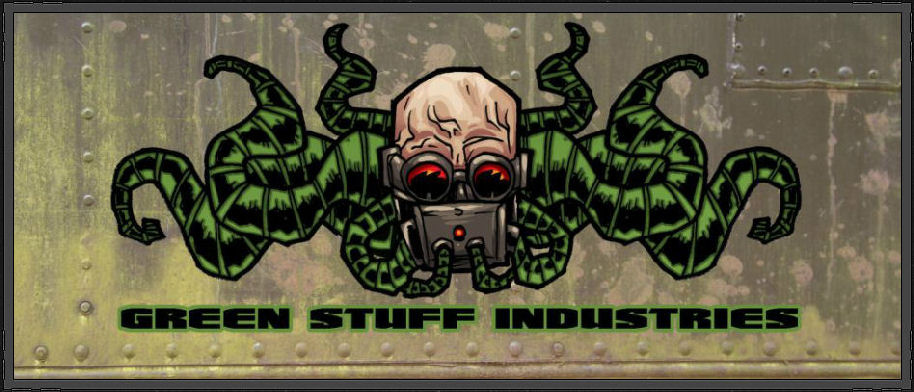by Rich K
Sandbags are easy but tedious. As of post time, I’ve made about 120 for this counts-as model. I’m guessing that will top 300 by the time I’m done.
Sandbags
There are several ways to make sandbags, to be sure, but the simplest way I’ve found is described below. What you’ll need…
- A good amount of modeling material (dependant on how many sandbags you need) such as clay, Milliput, or Green Stuff
- A fine-weave piece of fabric such as a handkerchief or a bit of T-shirt
- A pokey tool such as a sculpting tool or hobby knife
- A container of water to keep your hands from sticking to the modeling material, use as needed
Tear off an M&M peanut sized hunk and roll it into a ball in the palm of your hand.
Put a little bit of an oblong on it.
Place it in position.
Repeat until you have a bunch of blank oblongs in a line.
Take the fine-weave fabric and place it over the line of oblongs. Make sure there are no creases as these will mess up the sandbag look.
Gently squeeze the fabric into the sides of the oblongs. This will put the weave pattern onto the sides of your sandbags. Only squeeze enough to emboss the pattern otherwise you’ll deform the sandbags too much and they will just look funky.
Pull the fabric off the bags and reset it on top of the line.
Gently push down on the line to emboss the weave pattern on the tops of the sandbags as well as to push the sandbags down, giving them their customary shape.
Poke lines in the sides of the sandbags (front and back) to represent the stitching of the bag. Now, just let them cure overnight and then repeat with the next layer.
So far, my modeling material of choice for this is Milliput. Clay looked good and is much cheaper, but as it dries, it shrinks. Due to this shrinkage some of my bags do not meet which leaves unsightly gaps in the wall. Lesson learned.
Plasma Crater
The center of the fortification looked sort of empty, I needed something to fill up the space and add a bit of flare. You’ll need…- More modeling material
- A convex implement of some sort to press the crater into the material
- Crackle paint
- Possibly some other sort of paint as a binder/strengthener
Next take a large convex implement, in my case a screwdriver butt, and jam that down into the center of the pancake to create the crater.
Shape as necessary and let cure overnight.
Once cured, slather some crackle paint onto the outer walls of the crater. I went thick around the lip of the crater and thin on the outskirts of the slope. Thick gives you bigger cracks. Thin gives you smaller. Let that dry overnight.
I had to strengthen the crackles a bit or I was pretty sure they would flake off with normal use so I painted the crackle over with GW Undercoat Black. The sculpting tool is holding down a particularly unruly crackle flap.
Once I start painting the crater I think I’ll use a thin layer of GW texture paint in the caldera and around the outer edge. Over this will be a layer of gloss black/grey paint. I’m hoping it will look like boiling earth that suddenly cooled.
In the next installment I’ll cover painting this monstrosity. Until then, I’ve got a ton more sandbags to make…















Nice! Are you thinking of making one that is more modular and could be placed in a line? Also have you tried oven bake clay? I haven't noticed it shrink too much and should be both quicker and cheaper.
ReplyDeleteThanks, Spyrle!
DeleteYeah, I thought about modular but it takes me forever to get anything done so I just went with one big piece... that way, I have more of a chance to get it completed. Less parts for me to ignore, as it were.
I'll tell you one thing, having a blog like this really forces me to follow through with each of the projects I post. I get anxious when I post a "Part 1" and fail to deliver "Part 2" within a couple of weeks.
At any one time I probably have about 10 projects running simultaneously. The blog forces me to complete them, which is great.
I might know what you mean. By putting my Eldar Defense line up on the blog, I was forced to finish it and what a relief it is now that it is done!
Delete